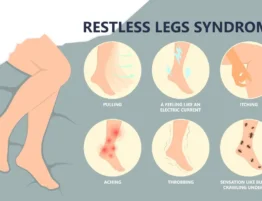
Heel pain is one of the most common foot complaints a foot specialist treats. For many, the term plantar fasciitis comes to mind when their heels start to hurt. Yes, plantar fasciitis is very common but other problems can be the cause of your heel pain. If your heel pain persists after months or years of self-treatment or treatment by your doctor, this blog is for you. You may be misdiagnosed and going down a dead-end pathway, you should consider if it is plantar nerve entrapment among other possible factors.
The Basics
The term plantar means bottom of the foot and the fascia is that strong connective tissue that runs from the ball of the foot to the bottom of the heel where it attaches. As your arch flattens, the fascia is pulled and pain can begin at the insertion on the bottom of your heel. However, it’s important to know that there are nerve branches in this same area that may be contributing to your pain.
The Tarsal Tunnel – The tarsal tunnel, much like the carpal tunnel in the hand, is an area where the nerve branches that have traveled down your leg go through to supply the bottom of your foot. The main nerve (See Diagram) is called the posterior tibial nerve.
As the posterior tibial nerve passes through the tarsal tunnel (which is composed of soft tissue structure) there can be excessive pressure on this nerve branch from those structures. We call this compression or a plantar nerve entrapment site. Following the posterior tibial nerve, it divides into three branches; one goes to the bottom of the heel and is called the medial calcaneal nerve. The other two are called the medial and lateral plantar nerve and supply the bottom of the foot. The medial branch supplies the bottom of the first and second, and a part of the third toe. The lateral plantar nerve supplies the fourth, fifth, and part of the third toe. Both of these nerves travel beneath a muscle called the abductor muscle. The tight fascial sheath beneath this muscle can compress (entrap) each of these two branches. If we follow the lateral plantar right after it goes beneath the abductor muscle, it sends a branch towards the bottom of the heel. This very small branch can be entrapped by the fascia of the quadratus plantae muscle. The branch is called the first branch of the lateral plantar nerve or Baxter’s nerve.
How do you know if you have entrapment of this plantar nerve which is a small branch of the lateral plantar nerve?
There will be subtle differences. This branch may cause more burning pain, tingling or numbness. The pain may be more dispersed in a larger area and not just where the plantar fascia attaches on the bottom of the heel. You may notice periodic tingling or numbness radiating towards your fourth or fifth toes. If you tap on the nerves in the tarsal tunnel area you may get a sensation like a funny bone sensation going down to your toes. This is called a tinel’s sign, and suggests the nerve in this area may be damaged from compression on the nerve.
What will your podiatrist do to test for plantar nerve entrapment?
Diagnostic Ultrasound – with every patient we see at Anderson Podiatry Center we evaluate your heel with ultrasound. This allows us to evaluate the soft tissue structures in this area including the nerve branches and the plantar fascia. If the fascia appears normal from this exam this will lead us to suspect that your heel pain may be more related to the nerves. It’s very important to know that there is no rule that says you only get one diagnosis. So, if we are treating plantar fasciitis because your ultrasound confirms it is damaged but you’re not progressing with our plantar fasciitis treatment, then this will raise our suspicions of another problem, potentially a plantar nerve.
What are the treatment options?
For The Patient – icing the area and taking autoinflammatory may help in the early stages and if the pain is mild. Make sure you’re wearing supportive shoes and you may consider trying over the counter arch supports. You may consider taking anti-inflammatory medication.
What will your foot specialist do?
Treatments may include using custom made arch supports, and orthotics. Additionally:
- Laser Treatments – Our MLS laser system has been shown to be highly effective for treatment of nerve conditions.
- Physical Therapy – ultrasound may have some benefit.
- Cortisone Injections – A series of cortisone injections, 2 or possible 3 injections may be helpful. This is done with ultrasound guidance so the nerve can be located, and the injection delivered in the exact location.
- Surgery – If the conservative options fail then surgery to release the pressure on the nerve from the soft tissue structures may be considered.
So, if you’re having heel pain, you may need to consider that it’s plantar nerve entrapment. Finally, you need to know that there are many well-meaning healthcare people whether it’s a physical therapist, family doctor, or people in the shoe industry that commonly assume if the bottom of your heel hurts then it’s plantar fasciitis. Understand that what you hear may be wrong and that is why the problem is persisting. Please consider revisiting your heel pain issue if you’re getting nowhere in your present course of treatment.











Write a comment: